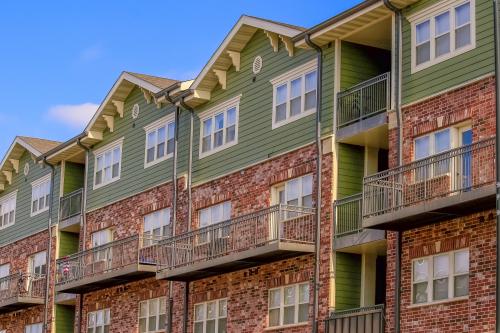Even for the wonkiest of housing wonks, 24 hours straight of zoning debate is a little much. But from 10 a.m. on March 15 to 10 a.m. on March 16—without stop—that is exactly what the Planning and Development Committee of the Connecticut General Assembly delivered. On the agenda was SB 1024, a statewide land use reform bill that would facilitate small increases in housing density near transit and commercial corridors, legalize accessory dwelling units (ADUs), and cap parking requirements.
Over the course of 24 hours, hundreds of speakers—including land use experts, practitioners, interest groups, and scores of ordinary citizens—testified. All in all, 71% of speakers were in favor of reform (including 100% of the 23 speakers below the age of 40), highlighting the effect of restrictive zoning on residential segregation, economic stagnation, and environmental degradation. Loud voices of opposition chimed in as well, decrying the loss of local control, feared drops in property values, and the specter of increased traffic and crime that would come with multifamily housing.
The intensity of the all-night hearing drove home the personal nature of zoning policies and their consequences. But it also brought up some historical questions. When and why did Connecticut’s municipalities adopt some of the most restrictive land use laws in the country? What effect did these laws have on the state’s development? And are zoning laws becoming more inclusive—as officials from some of Connecticut’s wealthiest towns claim—or have they actually gotten worse?
To answer these questions, I examined my hometown of Greenwich, Conn., where the effects of restrictive zoning policies are particularly pronounced across the town’s segregated neighborhoods, its racially imbalanced schools, and its sky-high property values. Thanks to my local historical society—yes, these are common in Connecticut—I found a trove of curated information explaining how Greenwich’s land use laws evolved and shaped its development through the present day.
From housing diversity to single-family uniformity
Today, Greenwich prohibits multifamily housing of any kind on more than 95% of its land. But historically, multifamily housing played a large part in the town’s transition from resort town into bustling suburb. Construction of all housing types boomed there in the 1930s, so much so that the Town Plan Commission imposed a four-story height limit for apartment buildings—over the opposition of many residents, who argued for a six-story limit.
The pace of construction only increased following World War II. The newly formed Greenwich Housing Authority led the way by developing large-scale multifamily housing, constructing 366 units across four developments between 1947 and 1953. Private construction followed, totaling over $1 billion in inflation-adjusted value in the 10 years following the war. While complete data is not available, three of Greenwich’s largest multifamily buildings—which include well over 500 units altogether—were built between 1945 and 1955.
But this surge in multifamily construction didn’t last long. In 1952, a new Planning and Zoning Commission replaced the development-friendly Town Plan Commission, and in the mid-1960s, dozens of civic associations publicly called for more restrictive zoning. In 1968, the Planning and Zoning Commission rezoned large swaths of four high-demand neighborhoods to allow for only single-family homes. As a result, construction of new multifamily housing ground to a halt.
In subsequent decades, the town took further action to block multifamily housing. In the 1990s, the town blocked its own public housing authority from building elderly affordable housing. The Housing Authority appealed the decision and won in court, only for the town to appeal the case to the Connecticut Supreme Court, where the Housing Authority again prevailed. Despite winning the lawsuit, the Housing Authority did not proceed with the project, bowing to political and financial pressures.
More recently, in 2017, the Planning and Zoning Commission banned multifamily development in many of the (few) neighborhoods where it was still allowed. The below maps show where multifamily housing was allowed before and after the 2017 amendments to the zoning code.
Figure 1. Where multifamily housing is allowed in Greenwich, before zoning changes and after

 Source: DesegregateCT Zoning Atlas.
Source: DesegregateCT Zoning Atlas.
Note: Purple shading in the top panel shows where multifamily housing was allowed prior to the 2017 zoning revision. The bottom panel shows multifamily zoning after 2017.
So, while multifamily housing once played a central role in driving the town’s growth, Greenwich has turned its back on this form of development in favor of single-family homes.
Zoning for estates through large minimum lot sizes
Another tool that Greenwich has used to restrict development is minimum lot sizes. In its early codes, the town set minimum lot sizes to provide housing for different classes of residents in different areas: low or nonexistent minimums in working-class neighborhoods; moderate minimums aimed at producing housing affordable to the middle class; and higher minimum sizes in areas designated for large estates. Though many parcels exceeded these prescribed minimums, the town freely allowed subdividing of lots during the 1940s and 1950s to facilitate new construction—a policy that came to an end upon the designation of the new Planning and Zoning Commission in the 1950s.
Over time, Greenwich has steadily increased minimum lot sizes. In 1947, following the construction of the Merritt Parkway, which bisects the town, Greenwich increased the minimum lot size for all land north of the highway—an amount comprising over one-third of the town’s land—to a whopping four acres. Though multiple lawsuits have challenged this very high acreage requirement, it remains in place today.
Similarly, in 1954, Greenwich doubled the minimum lot size from one to two acres in four prime residential neighborhoods along the coast, highlighted in Figure 2.
Figure 2. Large minimum lot sizes restrict middle-class housing
 Source: DesegregateCT Zoning Atlas.Note: Purple shading shows the area rezoned in 1954 to require two-acre minimum lot sizes. Today, these neighborhoods are home to some of the richest people in the state and even the country.
Source: DesegregateCT Zoning Atlas.Note: Purple shading shows the area rezoned in 1954 to require two-acre minimum lot sizes. Today, these neighborhoods are home to some of the richest people in the state and even the country.
In following years, the town continued to increase minimum lot size in several neighborhoods, all together covering well over 1,000 acres of land. Though these neighborhoods—many of which are near mass transit and downtown areas—originally allowed for a higher density of homes, they now only allow for large mansions, the likes of which have been home to Donald Trump and billionaires Ray Dalio and Paul Tudor Jones.
The consequences of restrictive zoning
Greenwich’s efforts to stall housing development through apartment bans and high minimum lot sizes halted the town’s growth. While Greenwich’s population jumped 68% between 1940 and 1970, it has remained flat since. Along with this anemic growth has been a range of negative consequences that come with density restrictions.
The plateau in Greenwich’s population over the past five decades masks a large shift in where people live in the town. From 1960 to 2010, the population of downtown Greenwich fell by 47%, including a 20% drop from 2000 to 2010 despite a local economic boom during this period. This near-halving of the downtown residential population has meant less foot traffic for local businesses (which have steadily been replaced by “destination” chain stores and commercial banks) and much worse vehicle traffic, as housing sprawls further away from jobs, services, and retail.
Moreover, Greenwich’s lack of housing diversity and low housing supply have made it unaffordable for many to live there. The median value of owner-occupied units in town exceeds $1.25 million, while the median rent tops $1,910 per month. As a result, only one-third of town employees—including teachers, police officers, and other middle-income earners—live in town, with a majority opting to commute from places where housing costs are lower.
Zoning is frequently touted as a means of protecting neighborhoods’ historic character. But in Greenwich, zoning has done the exact opposite—it has hollowed out the historic downtown, encouraged sprawl, and priced out the middle class.
Exclusionary zoning requires state and local reform
Greenwich is far from alone in adopting restrictive zoning practices. According to data compiled by the advocacy group I’m a part of, Desegregate CT, there are other towns that are far worse offenders. Given the ubiquity and pervasiveness of the problem, policymakers at all levels of government must take action.
Zoning rules don’t just affect the town where they apply. They have huge consequences on regionwide affordability, labor markets, the environment, and residential segregation. These externalities justify a robust role for regional and state governments in setting zoning policy. Indeed, those who closely follow housing issues are familiar with big-ticket legislation at the state level involving legalizing accessory dwelling units (ADUs), rezoning parcels near transit and job-rich areas for higher residential density, and allowing duplexes on single-family lots.
In Connecticut, housing activists have championed the aforementioned SB 1024, which would ease density restrictions near transit and commercial corridors, cap parking requirements, legalize ADUs in single-family zones, require training for local land use commissioners, and eliminate the word “character” from the state’s zoning enabling statute. The bill recently passed out of committee, albeit with the most controversial proposals—those easing density restrictions—taken out. Activists and some legislators have vowed to fight for the reinsertion of those proposals. The bill, in some form, should be up for a vote in each house of the state legislature in the next two months.
While the changes included in SB 1024 are significant and worthy reforms, they represent low-hanging fruit. Municipalities like Greenwich must exceed the floor set by state law by allowing high-density, multifamily housing near transit and commercial areas, legalizing “missing middle housing” on large swaths of residentially zoned land, and substantially lowering or eliminating minimum lot sizes.
Land use reform is often framed as looking forward, toward a future in which our communities are more diverse and sustainable. But for towns like Greenwich, it is equally important to look backward—to the pro-growth practices that allowed it to develop in the first place, and to the failed policies that have made it increasingly unaffordable and unsustainable.
Cover photo credit: Kenneth C. Zirkel via Wikimedia Commons (CC 4.0)
The Brookings Institution is committed to quality, independence, and impact.
We are supported by a diverse array of funders. In line with our values and policies, each Brookings publication represents the sole views of its author(s).







Commentary
How restrictive zoning shut the middle class out of Greenwich, Conn.
April 14, 2021